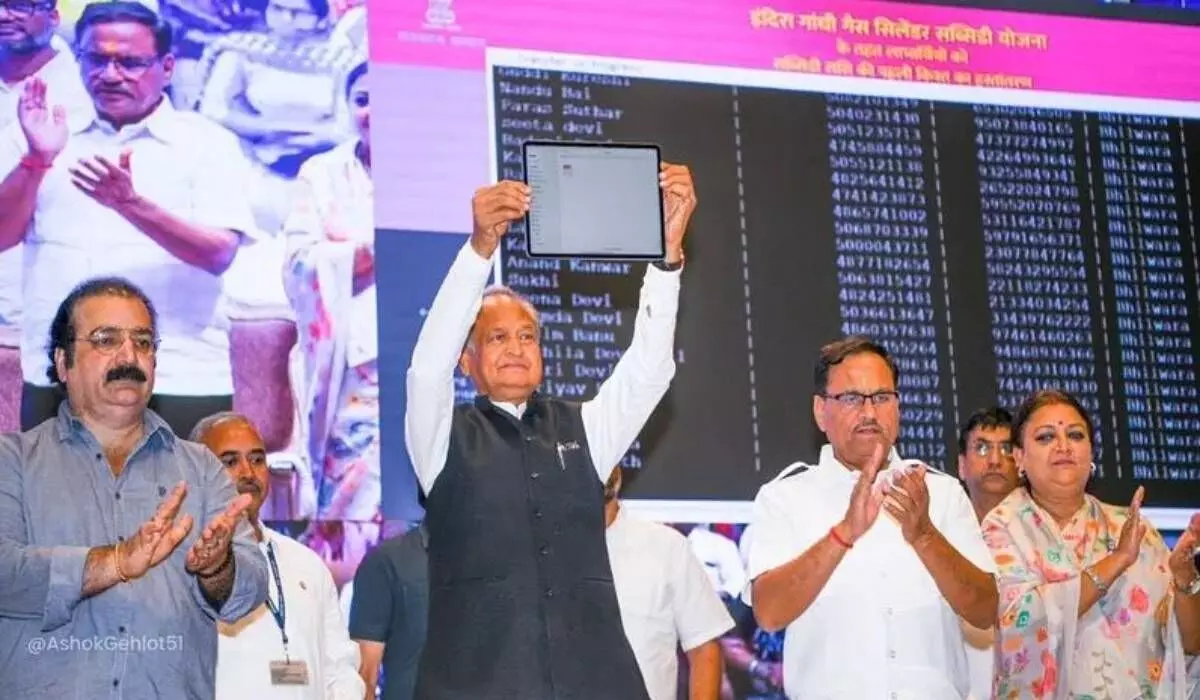‘Light-touch tax regulations yielding dividends for Rajasthan
State’s economy is on a forward march
image for illustrative purpose

Rajasthan these days has been hitting the headlines for its social welfare and people-friendly schemes launched by the Ashok Gehlot government.
While the opposition is terming it as freebies being distributed during an election year, Chief Minister Gehlot has clearly said that they are not freebies and the schemes have been launched after much thought and discussion.
"Today Rajasthan is performing much better than states like Gujarat without offering any freebies to the people. Several ambitious ground schemes have been launched in the state," he said.
"We have implemented schemes on the ground and did not limit to mere announcements of new projects," he said.
Gehlot pointed out that state governments depend on loans and so does the Centre. No state government, though, can take loans if the Centre does not permit it, he added.
Meanwhile, it has emerged that Rajasthan's fiscal deficit has been falling and recently it has been falling faster than the average for all other states.
On the revenue side, Rajasthan's receipts as a percentage of the state's gross domestic product (GSDP) have been higher than the average for all states over the last decade and that gap has widened.
Further, officials say that the state has also become financially more independent. Its tax revenue and non-tax revenue are higher than the average for all states, and both have been rising.
Also, Rajasthan is spending a higher proportion of its overall expenditure on social sectors like health and education, in comparative terms. However, the state has been performing slowly on the capital expenditure side, where its spending has been lower than average for a while now, but even this has been growing in recent years.
Further, since the pandemic, the state has done well to bring down its fiscal deficit, which spiked to 5.9 percent during the pandemic from 3.8 percent, a 2.1 percentage point increase in one year.
On an average, for all states, fiscal deficit rose from 2.6 per cent in 2019-20 to 4.1 per cent in 2020-21, an increase of 1.5 percentage points. Since then, however, Rajasthan has done well to bring its fiscal deficit back under control.
Rajasthan's revenue receipts were mostly flat as a percentage of its earlier GSDP. However, revenue receipts have seen surprising changes, first dropping during the pandemic, and then mounting a robust recovery in the subsequent two years. What is more notable, however, is that Rajasthan's own tax and own non-tax revenue has recently been taking a higher share of its overall revenue receipts than what has been the case in the other states on an average.
This is due in large part to the fact that Rajasthan -- being relatively oil-rich -- receives royalties for the oil produced in its territory.
Meanwhile, according to Arvind Mayaram, economic advisor to the chief minister, "The state has put in place "light-touch" tax regulations, which have improved compliance without "the need to keep doing raids".
With revenues doing better than average, it should stand to reason that the state's expenditure is commensurate with this performance. The data for Rajasthan shows its overall expenditure on health, education and other social sectors has been higher than the average.
Officials say that the state government believes in creating demand so that the other part benefits by creating a continuous supply chain. For example, if a person saves on getting a gas cylinder for Rs 500, he is bound to spend that amount elsewhere thereby boosting the economy, said officials.
According to them, Rajasthan emerged as the second most attractive destination for investments in India in FY 2022. Interestingly, the state witnessed the highest rate of growth during the period, soaring by almost 535 percent and attracting new investments worth Rs 2.37 trillion.
The state’s GSDP reached Rs 11.96 trillion in FY 2022, up 11.06 per cent y-o-y. The state's per capita income was Rs 1,35,000 during that time. According to data from Invest India, during the period from October 2019 to September 2022, Rajasthan received FDI inflows to the tune of $1.88 billion.

